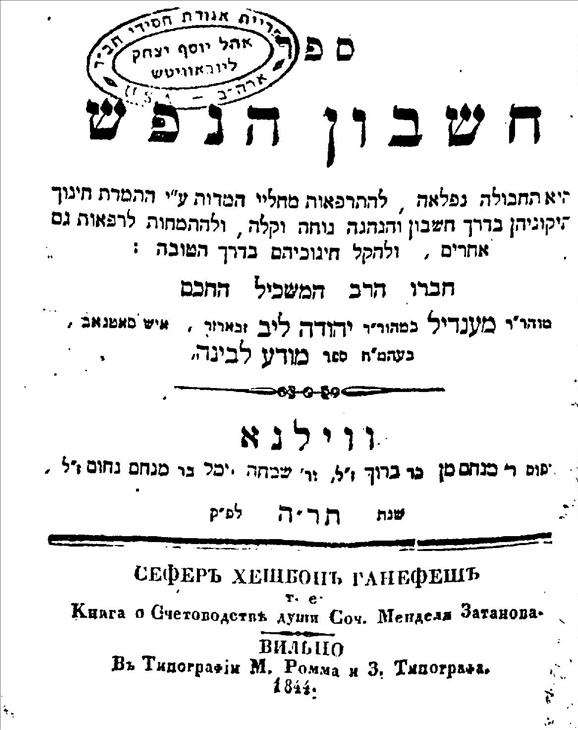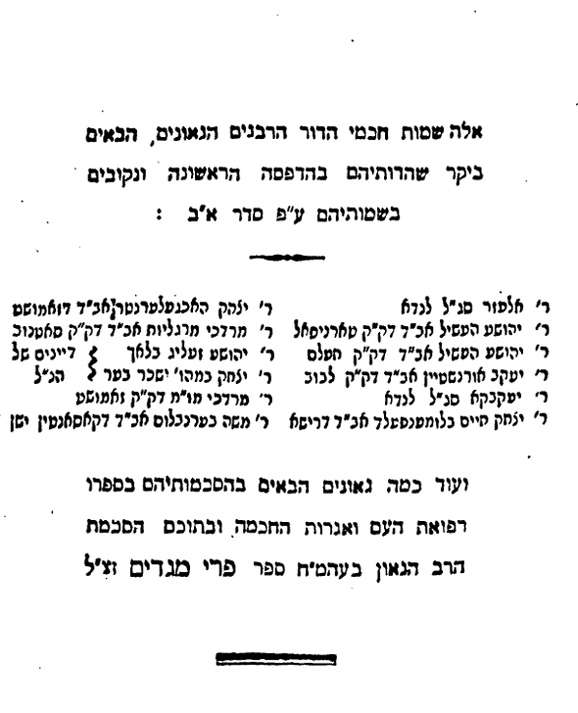
Dr. Nancy Sinkoff describes the circumstances behind the French essay on pg. xiv of her 1996 dissertation Tradition and Transition: Mendel Lefin of Satanow and the Beginnings of the Jewish Englightenment in Eastern Europe, 1749-1826:
Written for the National Education Commission of the last autonomous Polish parliament, it outlined the creation of a state-appointed rabbinate, the obligatory study of Polish in Jewish schools and proposed the occupational restructuring, or "productivization," of the Jewish community of Poland.
Sinkoff writes further (pg. 73) that Lefin explained later, in an unpublished manuscript, that his pamphlet was written as a response to Hugo Kołłątaj's order (and the NEC's agreement) that all Jewish men should shave their beards. A translation of this order that Sinkoff quotes is "All the Jews living or domiciled in the States of the Republic, with no exception, must shave off their beards and stop wearing the Jewish dress; they should dress as the Christians in the States of the Republic do." While agreeing in principle for the need for reform, Lefin's belief was that non-Jewish would-be reformers of the Jews could not be successful because no matter their good intentions, they do not really know what is good for the Jews. In the essay he quoted Montesquieu's condemnation of Czar Peter I's order forcing Muscovites to shorten their beards and clothing (to modernize them). Lefin believed the analogy was obvious; such an order was despotic.
Lefin intended to not only remain anonymous, but also that the identity of the author as a Jew should not be apparent. For this reason he also wrote in the most 'objective' manner possible, even quoting from antisemites like Voltaire, with the hopeful result that the Polish Parliament would not realize that the essay they were debating was written by a Jew. In the manuscript referred to above, he writes that he adopted this method based on a Talmudic story in Meilah 17a:
Interestingly, as the essay was published anonymously, for the reason outlined above, one wonders how it is that the identity of the author was already known in 1792, when the review (translated into English from a German paper) appeared.שפעם אחת גזרה המלכות גזרה שלא ישמרו את השבת ושלא ימולו את בניהם ושיבעלו את נדות הלך רבי ראובן בן איסטרובלי וסיפר קומי והלך וישב עמהם אמר להם מי שיש לו אויב יעני או יעשיר אמרו לו יעני אמר להם אם כן לא יעשו מלאכה בשבת כדי שיענו אמרו טבית אמר ליבטל ובטלוה חזר ואמר להם מי שיש לו אויב יכחיש או יבריא אמרו לו יכחיש אמר להם אם כן ימולו בניהם לשמונה ימים ויכחישו אמרו טבית אמר ובטלוה חזר ואמר להם מי שיש לו אויב ירבה או יתמעט אמרו לו יתמעט אם כן לא יבעלו נדות אמרו טבית אמר ובטלוה הכירו בו שהוא יהודי החזירום אמרו מי ילך ויבטל הגזרות וגו'יFor the Government had once issued a decree that [Jews] might not keep the Sabbath, circumcise their children, and that they should have intercourse with menstruant women. Thereupon R. Reuben son of Istroboli cut his hair in the Roman fashion, and went and sat among them. He said to them: If a man has an enemy, what does he wish him, to be poor or rich? They said: That he be poor. He said to them: If so, let them do no work on the Sabbath so that they grow poor. They said: ‘He speaketh rightly’, let this decree be annulled. It was indeed annulled. Then he continued: If one has an enemy, what does he wish him, to be weak or healthy? They answered: Weak. He said to them: Then let their children be circumcised at the age of eight days and they will be weak. They said: ‘He speaketh rightly’, and it was annulled. Finally he said to them: If one has an enemy, what does he wish him, to multiply or to decrease? They said to him: That he decreases. If so, let them have no intercourse with menstruant women. They said: ‘He speaketh rightly’, and it was annulled. Later they came to know that he was a Jew, and [the decrees] were re instituted. [The Jews] then conferred as to who should go [to Rome] to work for the annulment of the decrees. . .
Since his pamphlet is sharply critical of Chassidism (and it's interesting to see even a small blurb about it in English in the 18th century, as we see above) I thought it might be worthwhile to post some 18th century drawings of Polish Jews and non-Jews, in light of the oft-repeated contention that 19th century Chassidic dress (and by extension contemporary) is actually the form of dress worn by the Polish nobility two or three hundred years ago. Keeping in mind that this is only partial evidence so it can't settle the case either way, you be the judge:
Polish Jewish woman, 1766:

Polish Jewish man, 1768:
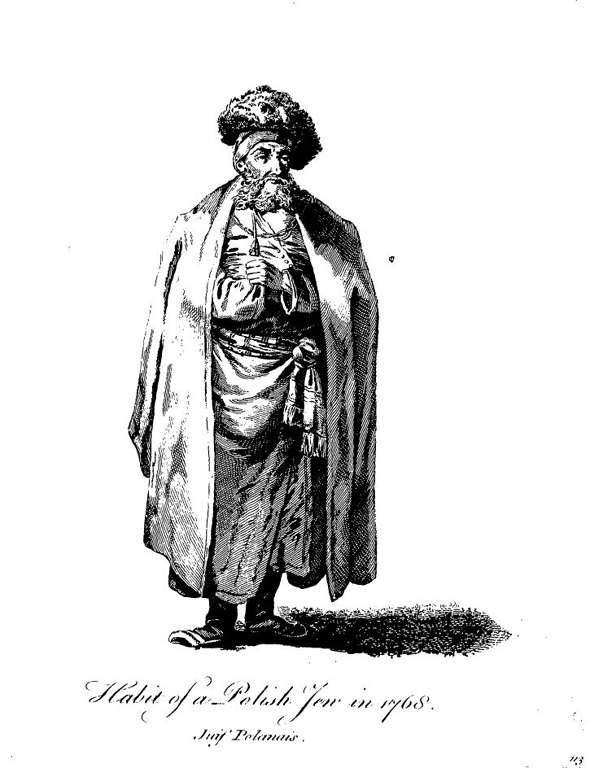
The king of Poland, 1700:
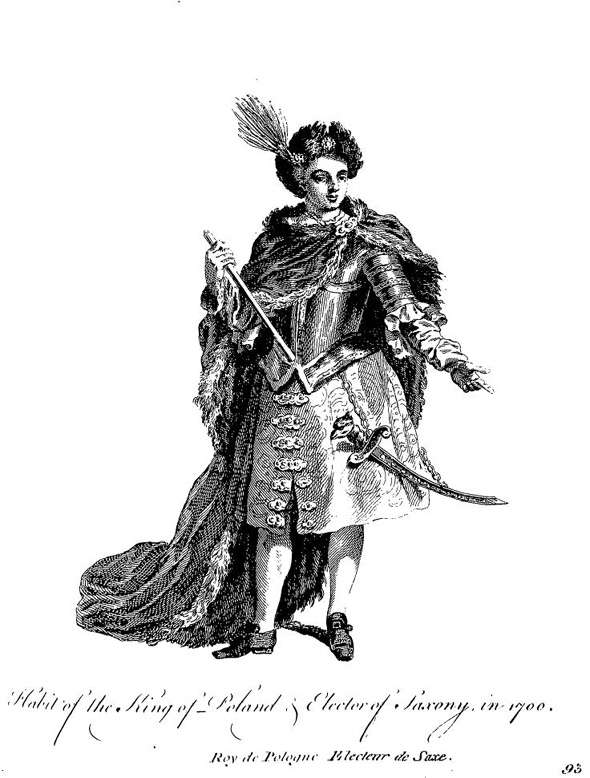
Queen, 1700:
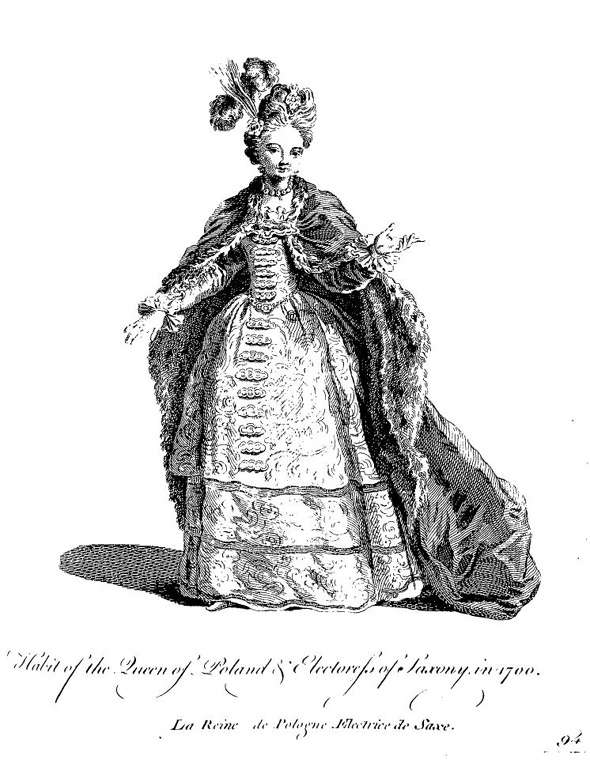
A Polish merchant:

A Polish noblewoman:
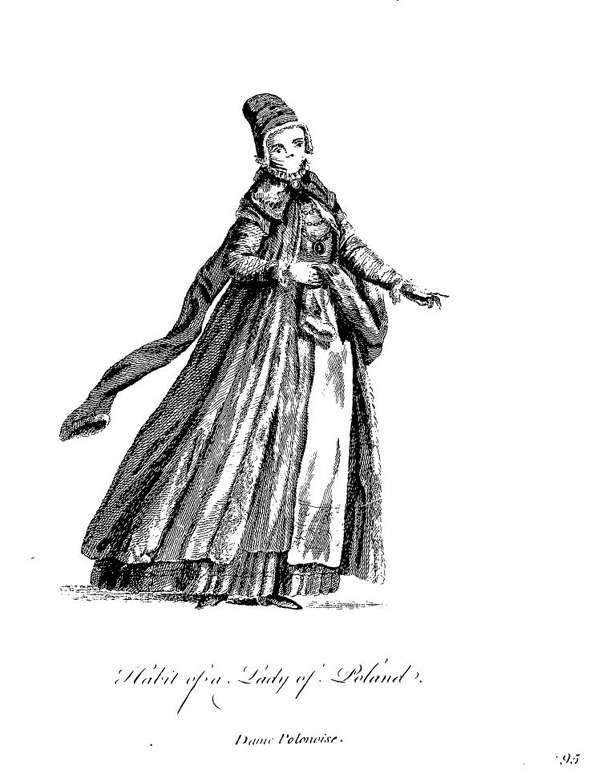
These images were taken from a four-volume work called A collection of the dresses of different nations, antient and modern (London, 1757-72). The artists were French, the work originally written in that language.
Pages from the 1844 edition of חשבון הנפש:
